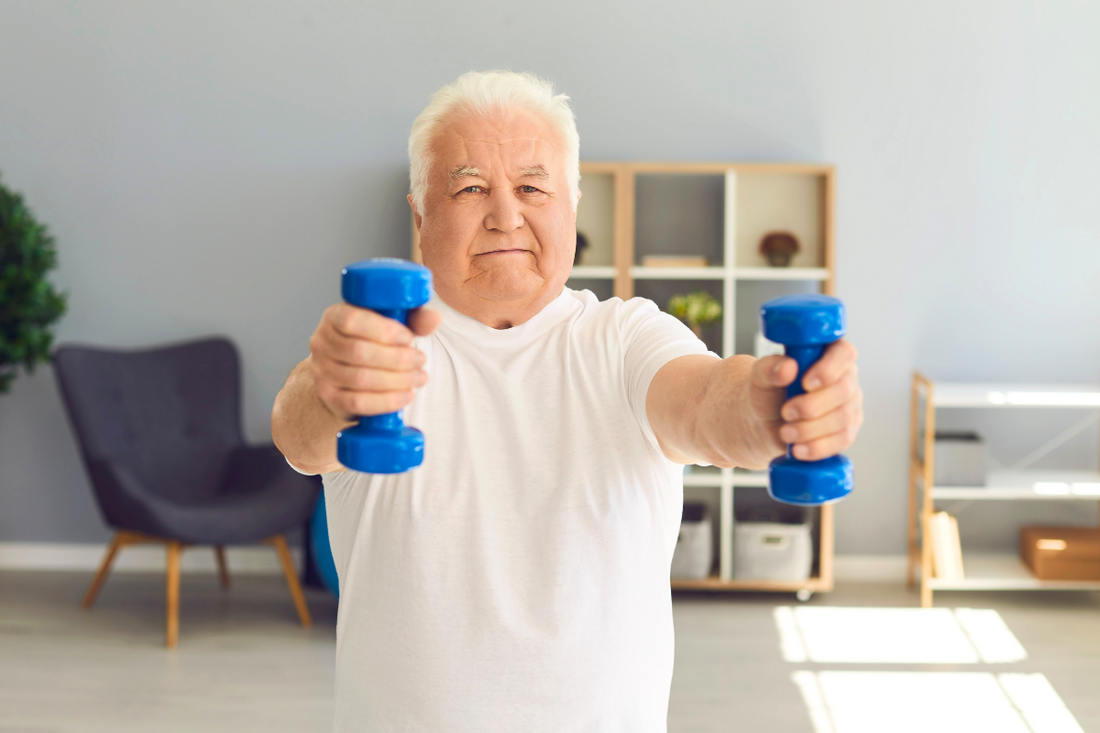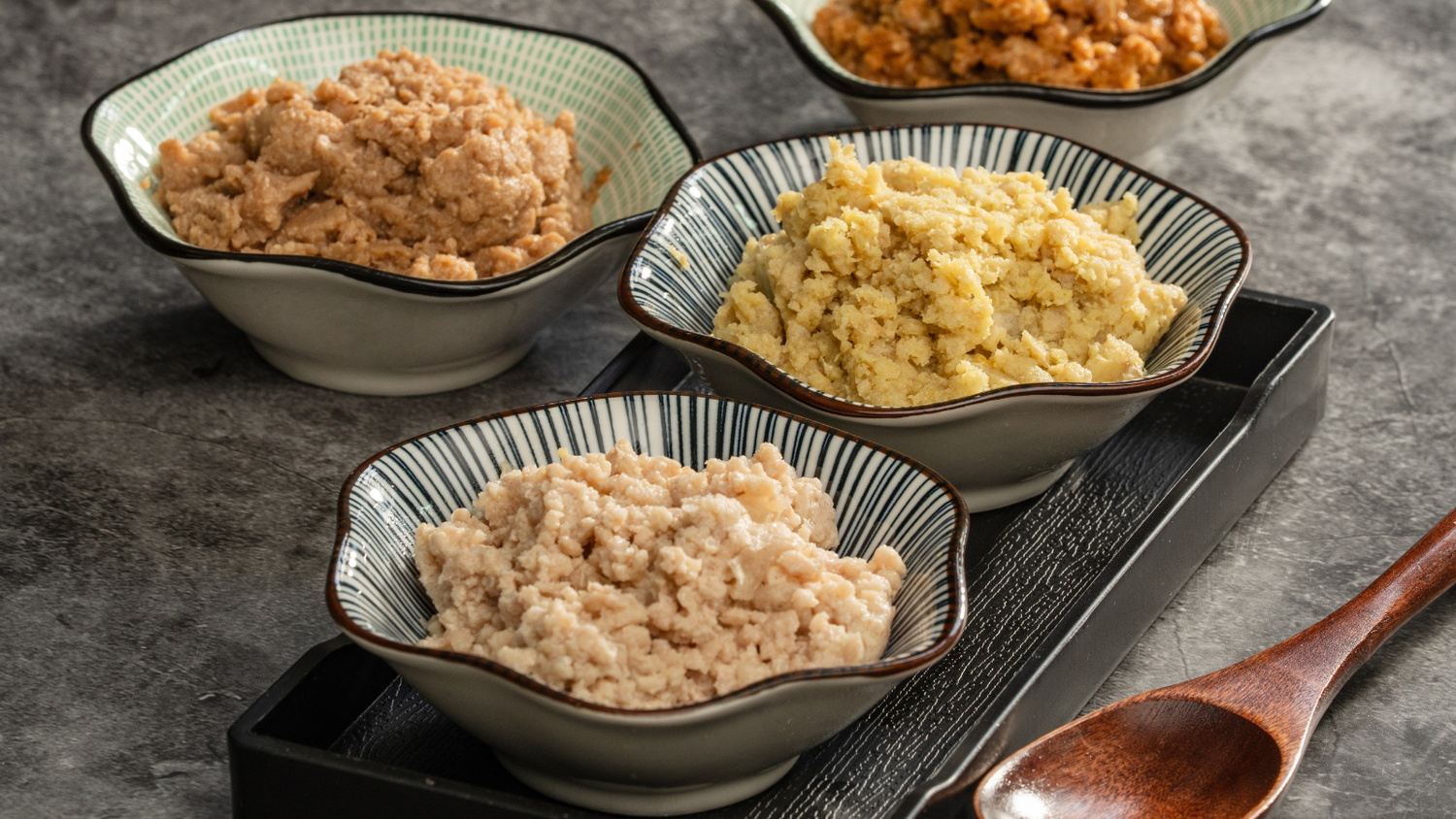Thinking of Lifting Weights as a Senior? Here’s How to Start
Share
For many older adults, the thought of lifting weights can feel intimidating — maybe even impossible. Images of heavy barbells and gym-goers in their twenties can make strength training seem out of reach.
But here’s the truth: weight training isn’t just for the young. It’s one of the best ways to stay strong, mobile, and independent as we age. And it’s not the only way to build muscle — good nutrition, especially adequate protein intake, plays just as important a role.
You don’t need to lift heavy to benefit — in fact, starting small is not only okay, it’s the safest and smartest way forward.
💪 Why Strength Training Matters for Seniors
-
Maintains muscle mass (which naturally decreases with age)
-
Strengthens bones and reduces the risk of osteoporosis
-
Improves balance and coordination, helping to prevent falls
-
Supports joint health and mobility
-
Boosts mood, energy, and confidence
-
Helps manage chronic conditions like diabetes, arthritis, and heart disease
The goal isn’t to become a bodybuilder — it’s to keep your body strong enough to do the things you love: walking comfortably, carrying groceries, or playing with your grandchildren.
🌱 Start Small, Stay Consistent
If you’re new to strength training, here’s how to begin:
- Bodyweight exercises first: Think sit-to-stand from a chair, wall push-ups, or step-ups.
- Use light resistance like small dumbbells, resistance bands, or even water bottles.
- Focus on form, not weight. Slow and controlled movements matter more than how heavy the load is.
- Aim for 2–3 times per week, allowing rest days in between for recovery.
⚠️ Safety First: Don’t Go It Alone
Even when using light weights, always prioritise safety:
- Have someone to spot you — a friend, family member, or trainer who can assist, even if the weights seem small.
- Warm up properly before starting, and cool down after.
- Stop if you feel pain, dizziness, or shortness of breath (mild muscle soreness is normal, sharp pain is not).
🥩 Muscles Aren’t Built by Exercise Alone: The Power of Protein
Exercise provides the signal, but protein provides the building blocks your body needs to maintain and grow muscle. Especially for older adults, consuming enough protein consistently throughout the day is key.
💡 Aim for 15–20g of protein at each meal.
Research suggests that spreading protein intake across meals is more effective for muscle protein synthesis than consuming it all at once. In fact, the body may not meaningfully absorb or utilise more than around 20–25g of protein at one sitting for this purpose【1】.
📌 Reference:
-
Moore, D. R., et al. "Protein ingestion to stimulate myofibrillar protein synthesis requires greater relative protein intakes in healthy older versus younger men." The Journals of Gerontology: Series A, 2015.
Link to study
🍽️ GentleFoods® Protein-Rich Options for Safer Nutrition
For seniors with swallowing difficulties, getting enough protein can feel challenging — but it doesn’t have to be. At GentleFoods®, we offer texture-modified meals that are both nutritious and easy to enjoy, without sacrificing flavour.
Here are some of our protein-packed options:
- 🐔 Chicken Bento — soft, savoury, and high in protein with familiar local flavour
- 🐟 Salmon Bento — rich in omega-3 and protein to support muscle and heart health
- 🍄 Mushroom Soup — smooth, comforting, and nutrient-dense
- 🍨 High-Protein Ice Cream — a delicious way to boost protein while keeping cool
These options are thoughtfully prepared to meet IDDSI texture standards, making them safe for those with swallowing challenges — and perfect for supporting muscle health at any stage of life.
💙 Lifting Isn’t About Heavy. It’s About Healthy.
Strength training doesn’t have to mean lifting big weights or spending hours at the gym. Combined with the right nutrition — including consistent, quality protein intake — it’s about staying strong enough to live life on your terms.
Start small. Stay safe. Fuel well. And never be afraid to ask for the right support along the way.





